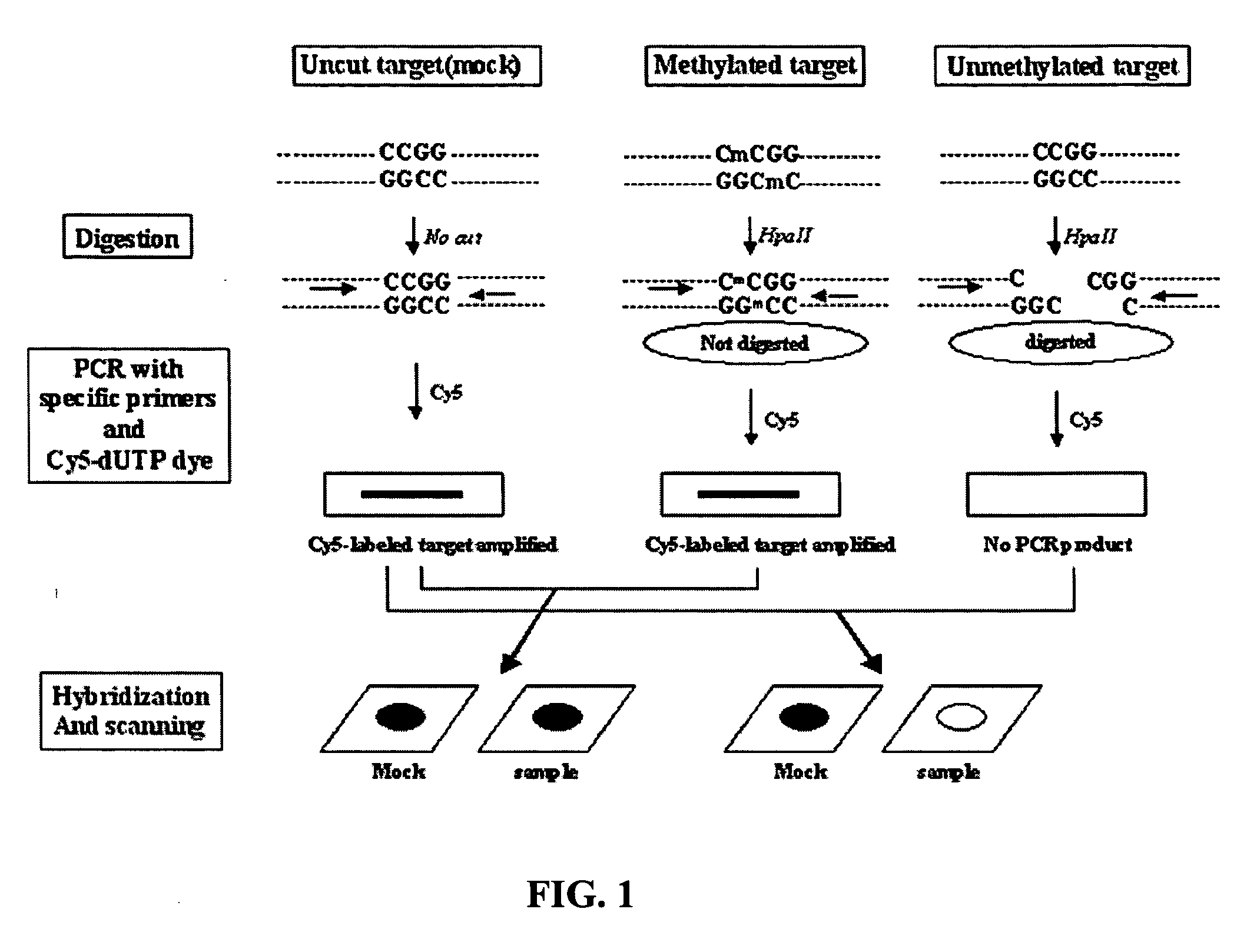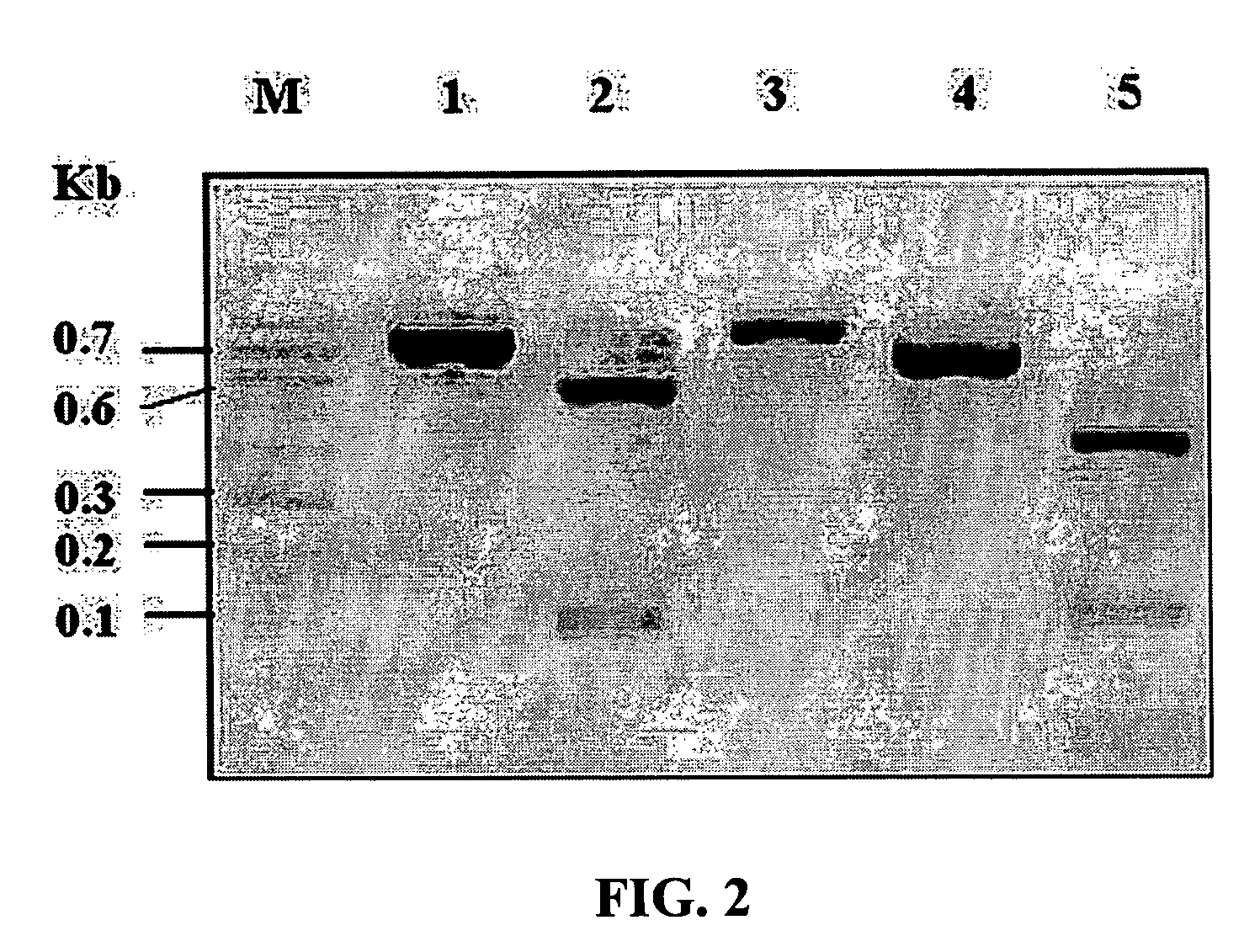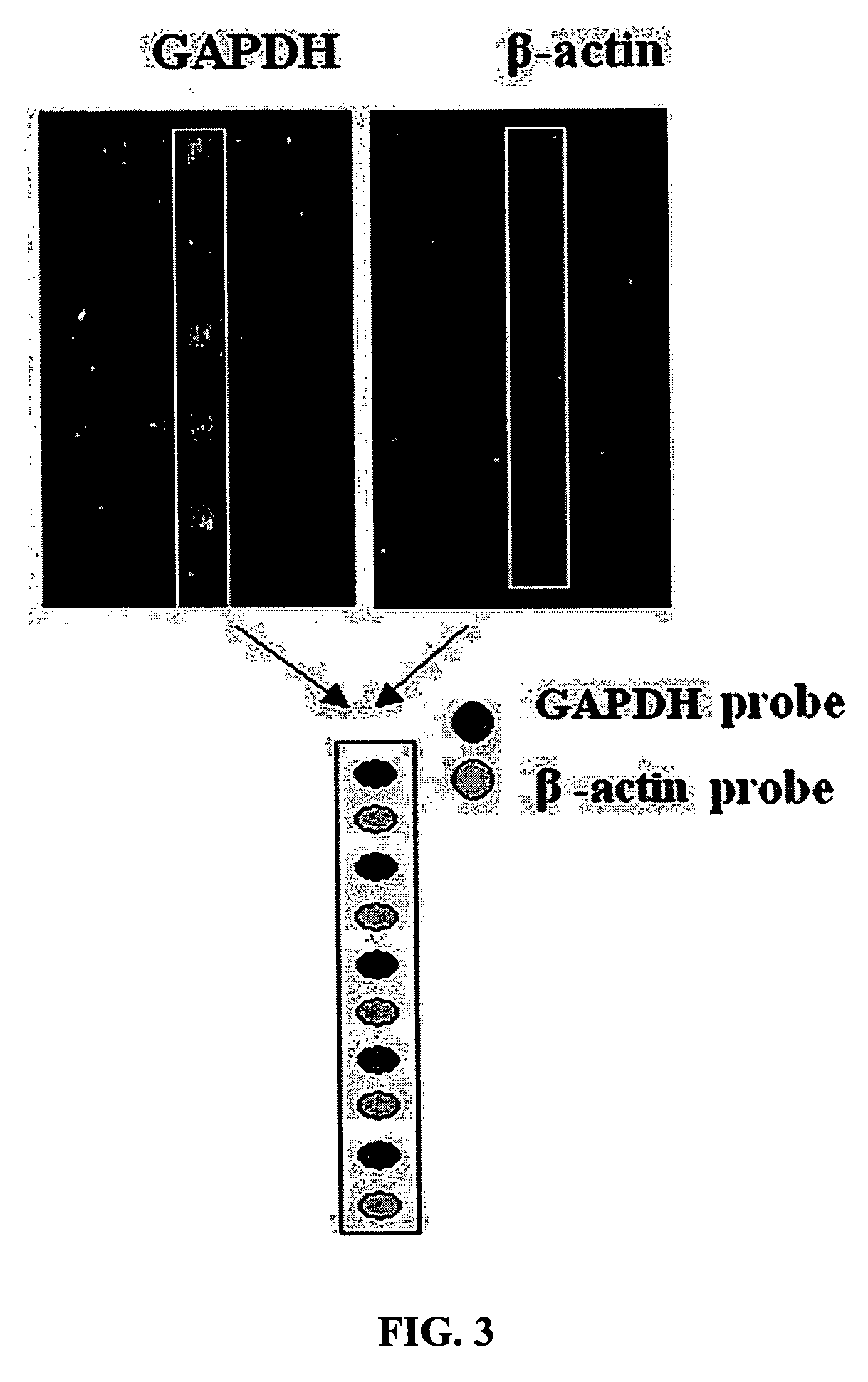Method for detecting methylation of promoter using restriction enzyme and DNA chip
- Summary
- Abstract
- Description
- Claims
- Application Information
AI Technical Summary
Benefits of technology
Problems solved by technology
Method used
Image
Examples
example 1
Measurement of Methylation of GAPDH and β-Actin cDNAs According to the Invention
[0047] In order to verify the cutting ability of an HpaII restriction enzyme according to methylation and the results of DNA chip hybridization according to a cut state, GAPDH and β-actin genes were used. The GAPDH gene contains one HpaII cutting site at the middle portion, and the β-actin gene contains two HpaII cutting sites. Each cDNA of the GAPDH (GenBank no. BC026907) and β-actin (GenBank no. BC002409) used in the present invention was cloned into a TOPOpCR2.1 vector (Invitrogen, USA) and then amplified by PCR with each of M13 primers (SEQ ID NO: 1 to SEQ ID NO: 4).
GAPDH-sense5′-tcaacggatttggtcgtatt-3′:(SEQ ID NO: 1)GAPDH-antisense5′-tagaggcagggatgatgttc-3′:(SEQ ID NO: 2)β-actin-sense5′-cccagatcatgtttgagacc-3′:(SEQ ID NO: 3)[0048]β-actin-antisense (SEQ ID NO: 4): 5′-gcagtg atc tccttctgcat-3′
[0049] The composition of a PCR reaction solution is shown in Table 1 below. The PCR reaction consisted of ...
example 2
Detection of Methylation of Cancer Cell Lines
[0060] In this Example, the methylation of promoters was detected on human cancer cell lines. As promoters to be measured for methylation, promoters of an MAGEA2 gene (melanoma associated antigen 2, GenBank No. NM-153488) and an RAR-β gene (retinoic acid receptors, GenBenk No. NM-000965), which are known to have been methylated in colon cancer tissue, were used (De Smet, C. et al., Mol. Cell. Bio., 19:7327, 1999; Virmani, A. K. et al., J. Natl. Cancer Institut., 92:1303, 2000).
[0061] In this Example, the genomic DNA of a Caco-2 cell line (ATCC HTB37) was used to measure the methylation of the genes. First, the genomic DNA of a Caco-2 cell line was isolated and treated with HpaII, which is a restriction enzyme for cutting a CpG site. In the restriction enzyme treatment, a reaction solution having the following composition was used: 2 μl of Caco-2 cell line genomic DNA, 5 μl of 10×HpaII buffer, 2 μl of HpaII (10 U / μl), and distilled water...
example 3
Detection of Methylation Using Clinical Sample
[0067] In order to examine if the inventive method for detecting methylation is applicable to clinical samples, methylation was detected using the cancer tissue genomic DNA of actual cancer patients. In this Example, methylation was measured on 12 genes (Table 4) in which the CpG island of their promoters is known to be methylated in human cancer tissue.
TABLE 4Name of genesGenBank accession no.MAGEA2U93163APCU02059CDH13AB001090MTHFRAF105977CALCAX15943ARM58158S100A2Y07755SRBCAF08198RAR-betaX56849EDN1J05008CFTRM58478BLT1AB008193
[0068] Genomic DNAs from human normal placenta tissue, tonsil cancer tissue and colon cancer tissue were isolated, and sites containing at least one HpaII cutting site in a CpG island of the promoter sites of the genes were amplified by PCR with primers shown in Table 5 below. Furthermore, the genomic DNAs of human normal placenta tissue were amplified with primers shown in Table 5 so as to obtain 12 probes (SEQ ...
PUM
 Login to View More
Login to View More Abstract
Description
Claims
Application Information
 Login to View More
Login to View More - R&D
- Intellectual Property
- Life Sciences
- Materials
- Tech Scout
- Unparalleled Data Quality
- Higher Quality Content
- 60% Fewer Hallucinations
Browse by: Latest US Patents, China's latest patents, Technical Efficacy Thesaurus, Application Domain, Technology Topic, Popular Technical Reports.
© 2025 PatSnap. All rights reserved.Legal|Privacy policy|Modern Slavery Act Transparency Statement|Sitemap|About US| Contact US: help@patsnap.com



